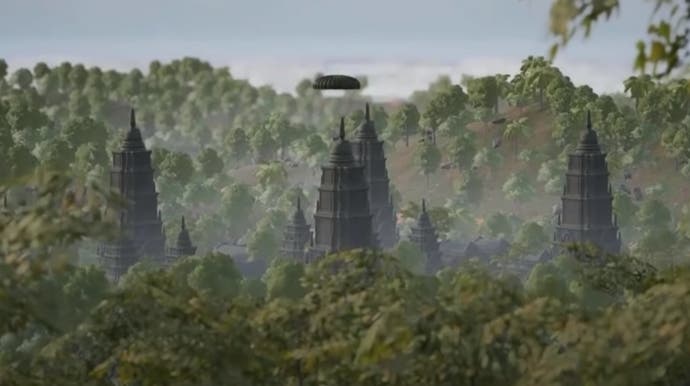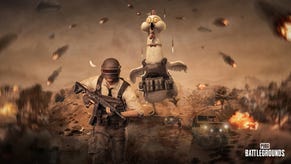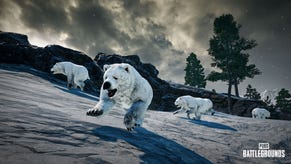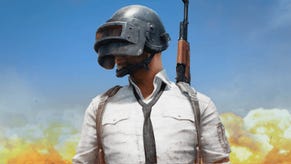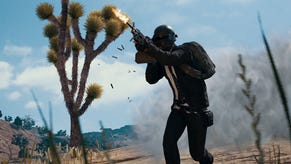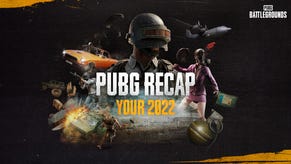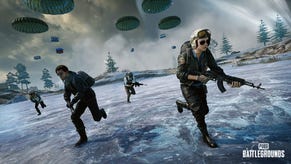PUBG studio director talks bots, Sanhok remaster and staying competitive in the battle royale market
"This is a game I want players to join 20 years from now."
It's been over three years since PUBG first popped up on Steam, and while that's a relatively short time on paper, it somehow feels much longer. Perhaps it's because the wider gaming landscape around PUBG has changed so much: no longer the only battle royale on the block, PUBG now finds itself sharing that market space with several competitors, with a new contender appearing practically every few months.
Given the game is no longer sparkling new and the battle royale market is so crowded, it's little wonder PUBG's player numbers are not what they were in 2017. But that's not to say the game has disappeared - it's still able to pull in 500k Steam concurrents on a daily basis, and has now sold 70m units. With PUBG heading into its eighth season (on 22nd July for PC and 30th July for consoles and Stadia), it seems as good a time as any to catch up on the general state of the game. I asked PUBG Madison studio director Dave Curd about PUBG Corp's long-term strategy, the Sanhok map remaster, and what sort of changes we'll see in Season 8. And also what's happening with those controversial bots.
We've seen a couple of map remasters from PUBG Corp already: starting with Erangel and then Vikendi, the latest to get the makeover treatment is Sanhok, with seemingly everything getting an overhaul in Season 8. I mean this quite literally. "Every building, wall, floor, rock, blade of grass and tree has been updated to have better, more accurate fidelity in terms of materials," Curd said of the updated art style. "From a storytelling perspective we really want to show that it's been some time since players have been to Sanhok, so more moss, algae, overgrowth... we really wanted the players to feel like they were exploring this overgrown jungle environment." On top of revamping the old, there's also a couple of new locations, including a tourist town called Getaway with a neon nightclub and pool cabanas, and an airfield at the north-eastern end of the map to replace the coconut farm.
"I would say with the Erangel visual update, perhaps 15 to 20 per cent of the design was changed, we were really conservative and wanted to make sure we kept all the fans happy," Curd explained. "But with Sanhok it feels close to 30 to 35 per cent different. This should be a very fresh experience for our players."
The changes go beyond just looking pretty, as PUBG Corp has used player feedback and internal data to inform how the redesigned terrain will affect gameplay. The north-west mountain, which has traditionally been seen as strong and overpowered, has been "totally reworked" to have "more flanks and more switchbacks to allow more tactical gameplay", also giving those in Bootcamp a chance to leave without being shredded. A number of changes target traversal, such as adding more bridges and sub-islands, drying up rivers to make them shallower, and removing sheer cliffs. Named locations have seen tweaks to make them more balanced, with Quarry altered to have "way more traversal and cover" and Pai Nan given "more parkour, more under the docks and sneaking around".
As for those looking for lore tidbits, Curd recommended dropping in the central Bootcamp and going "deeper than you might expect" while checking out the various screens and data hidden around the map. "We're trying to get a little bit more lore-forward... we want the players to be curious about the universe that this map and the PUBG games take place in," Curd added.
Another area you can find PUBG lore, of all places, is in the descriptions for the four signature weapons found in the new Loot Truck. The Loot Truck is another Season 8 addition, offering weapons with pre-installed attachments with enough gear to kit out "two to three people" - making it a tempting alternative to regular Air Drops. "I've been working on first-person shooters for 12 years - not a lot of players look up," Curd said. "The idea is there's a mobile care package, this big, lumbering buffalo unit - kind of cruising through the map." Curd hopes the truck will prompt players to debate risking their positions to grab valuable loot, or adopt tactics such as hunting down the players who hunted down the Loot Truck.
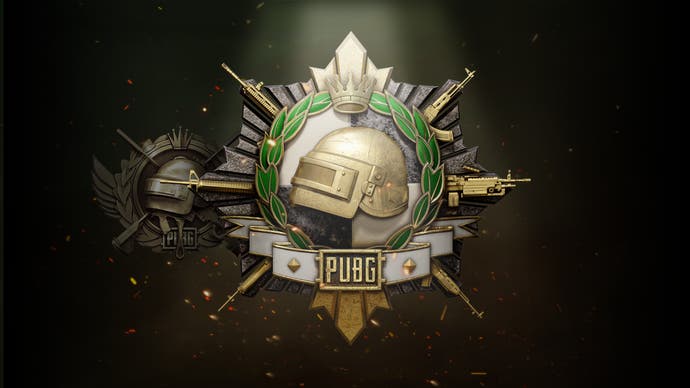
Beyond the new additions in Season 8, I was curious to hear whether PUBG Corp had any plans to revamp how the game's bots currently work. Added to the console and PC versions of PUBG earlier this year, the bots have been a hot topic in the community ever since, with complaints centred on AI behaviour and the number of bots in each lobby.
"Bots were added as support for new players and also further reinforced the difference between normal mode and ranked mode," Curd said. "You're absolutely right, they've been a little controversial for some players.
"Some of our new players - and myself too, because I can be bad at the game - have been enjoying the feature. I like when the dumb bot catches me on the shoulder and I'm like 'ok, I'm going to kill you and get that little hit of dopamine'. We just hit 70m [units sold]... so that is a lot of people checking out PUBG and getting absolutely wrecked by our veterans. So now with the bots, we are seeing new users getting kills, understanding the headshot is much more valuable than the chest shot, and the meta is not always loot from the building but loot from a player - let them bring their gear to you. These are the lessons I think only bots can teach.
"But it's an evolving system, and we still have a lot of work left to continue to balance the blend of PvP and PvE and make sure our bots provide the right level of challenge for players of all skill levels."
Curd elaborated that changes to bot AI would aim to make them "more interesting and more fun to play with" rather than simply more deadly. "The easiest thing in the world is to have a bot see you and shoot you, but that doesn't feel good," Curd explained. "I've seen what some of the unreleased bot features look like, and it's looking really cool. Expect the bots to keep getting better."
And as for the suggestion bots are being used to fill out lobbies?
"That's not my perspective, they're not there to fill lobbies," Curd said. "I would imagine we would just have fewer matches going if our only deal was to increase matchmaking. The bots are there to help with new users because they were just getting destroyed."
Another frequently-discussed problem in the PUBG community is cheating, which has been an ongoing battle for the developer. PUBG Corp's most recent efforts include the introduction of two-factor authentication, which Curd said has been "huge in reducing" numbers, but noted the battle against cheaters was essentially an arms race. "We're constantly in a forever war with cheaters... if you watched a graph of our cheaters over time, we're in a really good spot... [but] it's always going back and forth."
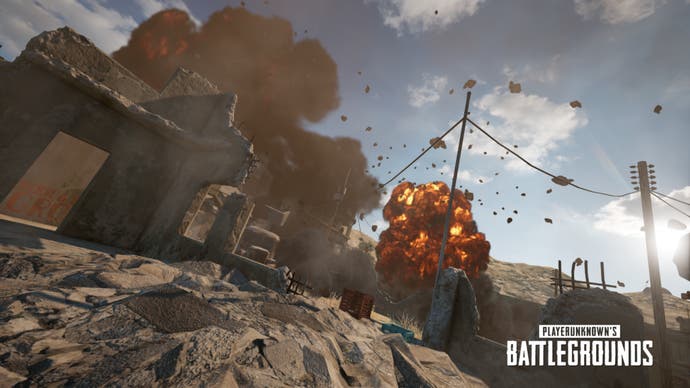
As for plans for the future, Curd said "everything's on the table" - including that clue about possible new maps in Chile and Alaska - but he did seem to hint that Miramar could be in-line for a revamp. And if that were to happen, PUBG Corp would likely take a similar approach to the Sanhok remaster. "I don't know when, but of course my eye is on Miramar because that was the very first map PUBG Madison worked on in collaboration with Seoul. That's something interesting to think about for the future.
"I think we look at the same thing - what have we done in Sanhok? We have our internal experiences and biases, we're listening to the community, we're working with esports professionals, being mindful of protecting fan favourites - we gave it all a new coat of paint. The map is now taking place in the present and we want it to be easier to loot, to be easier to see and identify targets. How do we protect its essence but streamline and make it more fun, more accessible? The lessons we are demonstrating in Sanhok... you can extrapolate, those are things we can consider for future map updates.
"This is a game I want players to join 20 years from now, we want to keep telling stories. We want to keep providing fresh experiences. I would say anything's possible."
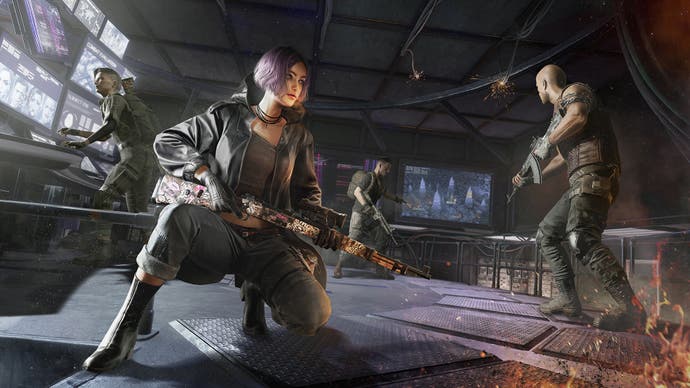
With PUBG Corp's current focus centred on map remasters, I was curious to find out about the developer's strategy for remaining competitive in a now-crowded battle royale market. I asked Curd whether PUBG Corp's long-term strategy emphasised improving the core experience, or continuing to innovate.
"It's both. You certainly need new content: you need new maps, modes and experiences to find the edges of the wall. We debuted that blue circle, and now everyone's doing blue circles, right? It's important to discover what else is out there and what the players are going to be really excited about. At the same time, our goal is always looking at performance, with the Sanhok remaster the map looks way better - but it's cheaper, we're optimising materials. We are finding the new frontiers, but we're constantly improving performance, improving quality of life.
"Finding a video of PUBG from 2017... it looks like a totally different game. It would have been so easy to ride this out, only sell costumes and not put so many resources into updating stability, updating how vehicles work, updating weapons not loading - these are all things we've been doing to ensure that the core game is healthier and healthier. We're treading lightly with new content... when we developed Sanhok, our first mission statement is it's got to perform better than old Sanhok. Players will reject new interesting content if it plays worse.
"The game is a lot different right now than it was when Sanhok first came out. So I would ask players that have maybe fallen out for maybe five or six months, or a year - not to just come back for Sanhok, but to see the gains we've made in the rest of the game as well."
